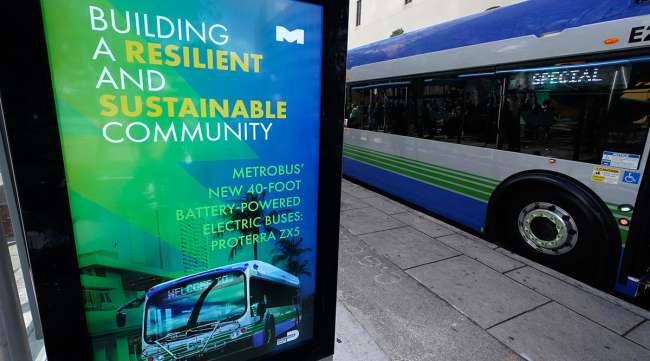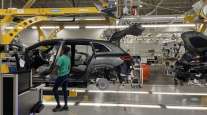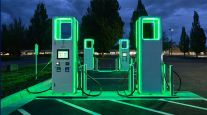Bloomberg News
Proterra’s Bankruptcy Illustrates Challenges for EV Startups

[Stay on top of transportation news: Get TTNews in your inbox.]
Electric bus maker Proterra Inc. had support from President Joe Biden, contracts with 135 transit agencies and $309 million in revenue. But despite that, it couldn’t turn a profit after nearly 20 years and filed for bankruptcy last week. In doing so, it revealed that a diversified business in the growing EV market and millions in government loans weren’t enough to keep it afloat.
“Rest assured, there will be more bankruptcies — including some public companies — in the EV industry,” said Pavel Molchanov, an equity research analyst at the wealth management firm Raymond James & Associates. “It’s only a matter of time.”
The Bay Area-based zero-emission bus manufacturer is one of the highest-profile EV company casualties in recent years. Proterra cited “market and macroeconomic headwinds” as the catalysts for its Chapter 11 bankruptcy filing, where it listed assets and liabilities of at least $500 million each.
“There’s a confluence of factors that brought us to this point,” said company spokesperson Shane Levy. “Some that are specific to the public transit industry that have impacted our ability to profitably scale each of our business lines simultaneously.”
The auto industry has deployed billions toward EV production, while across the globe, governments have set increasingly strict emissions limits and mandates to accelerate the transition to EVs. But manufacturing commercial EVs profitably remains a huge challenge for legacy automakers and younger companies alike.
“For vehicle electrification, the technology has gotten good enough to radically reduce the barriers to entry — it opened the floodgates,” said Dave Tuttle, a research associate at the University of Texas at Austin’s Energy Institute. “But there’s a certain finite window that you have to get the right formula and eventually get to cash flow because this is a high-intensity, high-capex type of market to build big vehicles.”
There’s a certain finite window that you have to get the right formula and eventually get to cash flow.
Dave Tuttle, a research associate at the University of Texas at Austin’s Energy Institute
Image
Proterra launched in 2004 as an electric bus maker before expanding into battery systems and powertrain production, as well as charging infrastructure. Founder Ryan Popple, who served as CEO from 2014 to 2020, was hailed as a rising star in the EV industry before leaving the company. (He died in 2021.)
The company went public in June 2021 after merging with a special purpose acquisition company. Its value stood at $1.6 billion when the deal closed.
Proterra has delivered more than 1,000 electric buses to public transit agencies in places like Los Angeles and San Francisco since 2010 since 2010. In 2022, it generated $309.4 million in revenue, up 24% from the year prior, according to company filings. The company was awarded a $10 million loan from the Paycheck Protection Program in 2020 that was forgiven in May 2022, according to a filing.

Proterra expanded into battery systems and powertrain production, as well as charging infrastructure, but most of its revenue has come from selling electric buses. (Proterra)
Biden, who attended a virtual tour of a company facility in 2021, praised Proterra as a leader in the EV sector amid plans to electrify the U.S.’s fleet of transit and school buses.
“I have overwhelming confidence in American enterprise,” he said during the tour. “We can do anything if we put our mind to it.”
But profit never came. In the first half of 2023, Proterra generated about $165 million in revenue and had $180 million in outstanding debt, according to its most recent quarterly earnings statement. As of June, the company’s accumulated deficit was $1.4 billion. Bankruptcy now gives Proterra protection from creditors while it plans how to repay them.
The company’s stock has plummeted 90% since the Aug. 7 announcement, and its shares have fallen from more than $15 to less than $2 since it went public. Despite the setback, Proterra says it’s pushing ahead with business as usual while it works to recapitalize its operations. The company says it has ample opportunity to secure new capital, rework its business strategy and continue to serve its customers.
Biden, Apr. 20, 2021, to Proterra: "When you start making a thousand busses a year, you're going to need more room for customers" pic.twitter.com/DQ5hrYLPHt — Tom Elliott (@tomselliott) August 8, 2023
“We have customers, there’s demand, there’s opportunity,” Levy said. “We believe the Chapter 11 reorganization process presents the opportunity for the company and its product lines to deliver value into the future.”
Despite increased market demand and government support for EV adoption, selling buses to transit agencies is costly and contracts can take years to complete. That’s because bus customization needs vary by transit agency. Plus, municipalities tend to buy buses in batches when funding is available, creating unpredictability that makes it harder to manage a consistent cash flow, according to Nikolas Soulopoulos, head of commercial transport research at BloombergNEF.
Those challenges, coupled with rising inflation and supply chain constraints, can further delay a contract’s completion and hike up the price of production. For five out of the previous six quarters, Proterra had negative gross profit, meaning they were likely selling their electric buses at a lower price than what it cost to make them, Soulopoulos added.
“It simply remains hard to make vehicles profitably and at scale — in this case, buses and trucks,” he said. “Also, while the prospects of the electric bus and truck market are promising, manufacturers will have to navigate a period of low volume and high investment needs. Getting through that is likely to be a bumpy ride for many.”
Rest assured, there will be more bankruptcies — including some public companies — in the EV industry.
Pavel Molchanov, equity research analyst at Raymond James & Associates
Image
The market for electric buses is much smaller than for other zero-emission medium- and heavy-duty truck models. About 750 units hit the road in the U.S. and Canada in 2022, down from a peak of 1,000 buses in 2020, according to BloombergNEF.
Legacy automakers with deeper pockets, including Daimler, Volvo and Ford, can afford to invest in EV development since they make most of their revenue from selling diesel- and gas-powered vehicles. But many EV startups and early-stage companies like Proterra are struggling with cash flow shortages amid a funding drought, said Molchanov.
“Proterra has been burning cash every quarter, both as a private company and as a public company,” Molchanov said. “There comes a point when you run out of cash, so then the question becomes, ‘OK can we raise more capital or do we need to restructure the business?’ ”
Want more news? Listen to today's daily briefing above or go here for more info
The company’s financial position largely mirrors what has been happening in the market, Molchanov said. EV startups including Nikola, Arrival and Workhorse had also reported consecutive quarters of intense cash burn, while EV manufacturer Lordstown Motors went bankrupt in June. Volvo also discontinued selling its Nova Bus in the U.S. market in June due to “continued financial losses over the years.”
Molchanov noted that successfully scaling up EVs in North America is particularly challenging for manufacturers because demand has been growing less robustly than in either China or Europe. China accounts for more than 60% of the world’s EV sales, according to the International Energy Agency.
“Where do you think it’s easier to be an EV company? The question answers itself,” Molchanov said.






